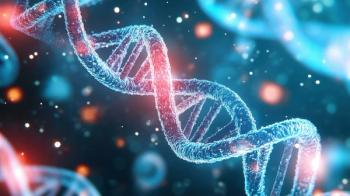
NCI Director Highlights a Year of Progress in Hematology, Outlines Areas of Focus Going Forward
During the 60th American Society of Hematology Annual Meeting & Exposition held December 1-4 in San Diego, California, Norman Sharpless, MD, director, National Cancer Institute (NCI), brought attention to several advances made in hematologic malignancies over the past year and highlighted 4 areas of focus going forward.
“Now more than a year into the job, I’ve heard from a lot of stakeholders. I’ve heard from doctors and scientists, patients and advocates, and one clear fact from all those conversations is this: it is a great time to be a cancer scientist and a cancer doctor in the United States,” said Norman Sharpless, MD, director of the National Cancer Institute (NCI), as he addressed a crowd at the 60th American Society of Hematology Annual Meeting & Exposition held December 1-4, 2018, in San Diego, California.
Sharpless highlighted numerous recent advancements in the care of hematologic malignancies, including moxetumomab pasudotox-tdfk, a new treatment for hairy cell leukemia, which hasn’t had a new treatment option in 20 years, as well as the 2 chimeric antigen receptor T-cell therapies approved in the last year: tisagenlecleucel and axicabtagene ciloleucel.
He also brought attention to 2 NCI-supported trials of both younger and older patients with chronic lymphocytic leukemia that identified a chemotherapy-free approach using rituximab and ibrutinib rather than drugs like bendamustine and fludarabine for these patients. “This is really important because we now have a relatively gentle regimen that works really well for these patients,” he said.
Sharpless called the past year an “extraordinary period” for acute myeloid leukemia, which came after decades of limited progress. In the last year and a half, the FDA has approved 8 new drugs for the disease, including 2 isocitrate dehydrogenase inhibitors, 2 Flt-3 inhibitors, and venetoclax.
Advancements like these are a result of detailed, elegant basic science, according to Sharpless. “There’s this great basic science that’s developing in hematologic cancers, and these scientific developments are translating into meaningful therapies for patients,” he said.
However, despite this progress, many will rightly say it’s not enough, said Sharpless, with many of these new therapies being only moderately effective and sometimes not curative. He called these therapies singles and doubles, noting that we still need home runs.
Following a listening tour to hear from stakeholders across the hematologic landscape, Sharpless identified areas that, while they are not new concepts, we need to sharpen our focus on in the next few years. He outlined 4 focus areas:
- Workforce development: Supporting the cancer research enterprise by focusing on the workforce cancer investigators
- Basic science: Reaffirming the NCI’s commitment to basic science to drive novel approaches and technologies
- Big data: Increasing data aggregation and interpretation to speed work across the cancer enterprise
- Clinical trials: Fully realizing the power of clinical trials through innovative design, administration, and analyses
Newsletter
Stay ahead of policy, cost, and value—subscribe to AJMC for expert insights at the intersection of clinical care and health economics.












































